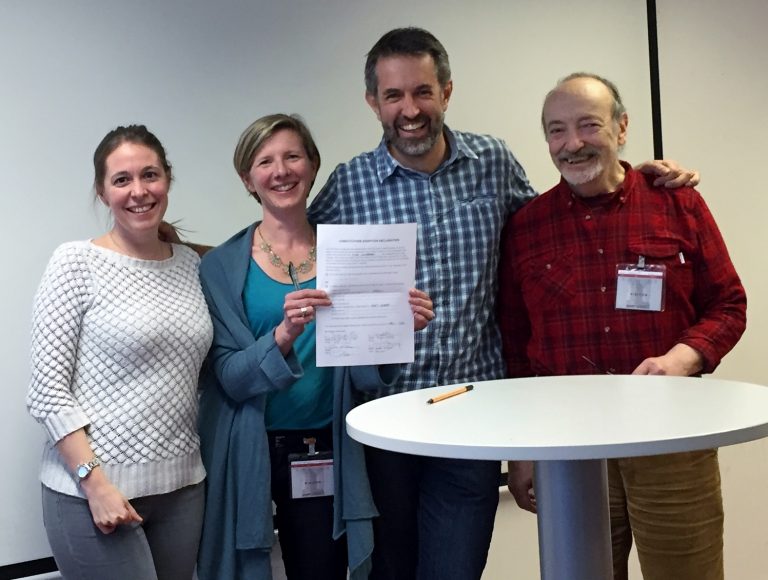Lessons from stone sculptures
This story starts in a stone quarry somewhere in Southern Africa up to a decade ago, and ended on Sunday afternoon when I delivered around a ton of beautiful stone sculptures to an unsuspecting suburban house in Leeds, in the North of England. Friends have laughed as the saga has evolved, but I think (and I’ll come to this at the end) there’s a serious lesson in how we can build engagement and economic development across divides.
I wasn’t at the stone quarry. And I’ll leave the specifics of where the sculptures come from somewhat anonymous, lest google searches find their way to this blog rather than the project itself. But the place they were created is inspiring indeed: a learning village in a troubled southern African country which was created to engender a new sense of life-affirming community. One of the many projects in the learning village involves teaching the art of stone sculpture. To generate income, the sculptures are for sale. A few years ago, I was visiting this learning village. The main sculptor took me on a tour of his work. I decided to buy one of the more impressive pieces: a close to life-size semi-abstract of a woman bending forward and washing her long hair in the river. Driven as much by the intention to support the artist and the learning village, as by my desire to have my apartment’s decor NOT be solely defined by the designers at Ikea, I agreed to buy it.
Back in London, I wired the money and my address. A few months passed. I emailed the sculptor and asked the status of my artwork. “They,” he replied, setting faint alarm bells ringing, “are on the sea”. I’d known my work would be shipped. And when I enquired about the “they”, he said he’d thrown in a few extras in the hope I could sell them to friends, and that he hoped I would like them.
I received communication from the shipping company. The waybill confirmed that the sculptures (I had come to terms with the plural form, by now) were en route from Africa to Southampton, via Singapore. It mentioned some 50 sculptures, with a total weight of 1.2 tonnes.
(I should, at this stage, point out that I live in a second-storey flat in London. I now think the flat has been greatly enhanced by the hair-washing woman, although, weighing roughly 100kg, I should also mention that it is impossible to move her around the flat without appearing rude.)
Luckily I had just rented a storage garage, so I was able to arrange for the delivery of said statues to the garage. As luck would have it, I was to be working in Brazil the week of their arrival; but having determined the daily cost of storage at the port, arranged for a string of removals companies to deliver them to the garage in my absence. I returned home to a wooden crate the size of a small (okay, very small) car filled with all manner of beautiful stone artwork – more than 50 pieces, ranging from the size of a large paperweight to the height of a tall child. Beautiful they were. Saleable? I wasn’t sure.
In the two or so years which followed, I alternated between trying various methods of selling them, and avoiding finding methods of selling them. I tried ebay, my block’s Facebook group, friends, colleagues, even the embassy of said troubled African country, an African stone sculptures email list and an art shop. All to very little avail. When my lease on the garage came to an abrupt end (the landlady thought I was an arms dealer, I imagine), I managed to offload the three largest statues to the night-time security guard, and move the rest into my flat. (The irony is not lost on me that there was only storage space for most of them thanks to the ingenuity of an Ikea designer.) When, on my advice, the security guard enquired with the sculptor about a suitable price for the three large ones, he was so put off by the exorbitant amount quoted that he promptly got some statues from elsewhere, and told me he wanted to return the three to me.
Friends advised me to give up and ditch them all. But I really wanted to sell the sculptures and send some money to the artist. I believe in the learning village. They really are beautiful. And so the saga continued, with ups and downs (and a fair amount of avoidance behaviour), until finally the founder of the learning village made a connection in Leeds. A festival was being organised where she would try to sell the sculptures. Finally.
Last weekend, I rented a van, paid two removals men to help me get them loaded, and drove the sculptures the five hours to Leeds, where I hope they will fetch a good price. (If you’re interested in some fine African artwork, visit http://tinyurl.com/3nfyq4v).
The irony is that I don’t believe the selling price of the sculptures will exceed the costs of shipping, duty, delivery, storage and re-delivery (should I charge for this, which of course I won’t) – let alone the cost of rock, time and skill in making them. A bit of engagement up-front – the building of a high-trust relationship and the creation of an innovative plan and agreed accountabilities between sculptor and middle-man (me) – might have yielded an all-round more profitable solution. I just don’t think sculptor had any idea how different an apartment block in South London was to a rural village in his home country, or what new challenges in storage and selling I would face, or how to price the sculptures in this market. (Or, indeed, how hard it is for me to find the time to sell stone sculptures in my schedule.)
The lesson for us all? Well, there’s probably a whole blog post on my avoidance behaviour to be written here. But I want to focus on the world of cross-sectoral collaboration. Those of us who facilitate cross-sectoral dialogue between business, civil society, government, social enterprise and academia often talk of the need to get people into each other’s shoes; to build understanding across the divides. So often, we see this imperative directed at the corporate world. I completely agree here. I have been privileged to see the lightbulbs go on when well-off bankers realise that not everyone shares their rarified experience of the world, and dabble with entirely different world views in an effort to have a real impact. I am pleased that these leaders will rise to positions of power and influence with this enhanced view of the world. But we should not forget that the need to “redirect” (to get into the other’s shoes) is as strongly needed in the “development sector” and the “developing world” – particularly in any project focused on generating income by selling to the “wealthy West” or global North.
I am reminded of two related experiences. Once I facilitated a global corporate team on a learning programme in India. The team were working with women’s self-help groups in Goa’s mining region to empower their members to generate sustainable incomes. The women’s main activity was making things to sell to Western tourists (the mines of Goa are an hour or two from the famous beaches). Our local NGO partner had set up visits for our team with every imaginable stakeholder – villagers, community leaders, local government, the mines, other NGOs… all except for the most obvious one: the tourists and shopkeepers. (Just what is it about such and such trinket that so beguiles the traveller wandering aimlessly around a tourist shop? we wanted to know). Earlier this year, I found myself in the mountains of Java, Indonesia working with another corporate group to help a network of 10 local villages make an economic success of coffee farming – an environmental and economic necessity in this particular region. (Coffee results in less soil erosion than other crops, and the price is more stable). Again, every stakeholder group possible had been scheduled… save for the global buyers of Indonesian coffee.
In both cases, the situation was easily remedied (a visit to the tourist shops and beaches of Goa, to which the hard-working team-members didn’t object; and calls with a coffee trader of a commodity-trading client in Europe and an ex-colleague who now imports coffee). In both cases, these stakeholder insights proved key to the team’s solutions and the broadening of their clients’ perspectives.
But it has got me thinking. Perhaps there is a common “blind spot” as we try to work with those in emerging economies to build sustainable livelihoods. Perhaps there is even an aversion to the “evils of capitalism” which stands in the way of encouraging an understanding of the “market” in the West. Whatever the cause, sometimes the universal lesson of standing in the other person’s shoes, of truly learning to work in their world if you wish to make a success in it, is forgotten.



